
Reviewed by
Beck Jinnette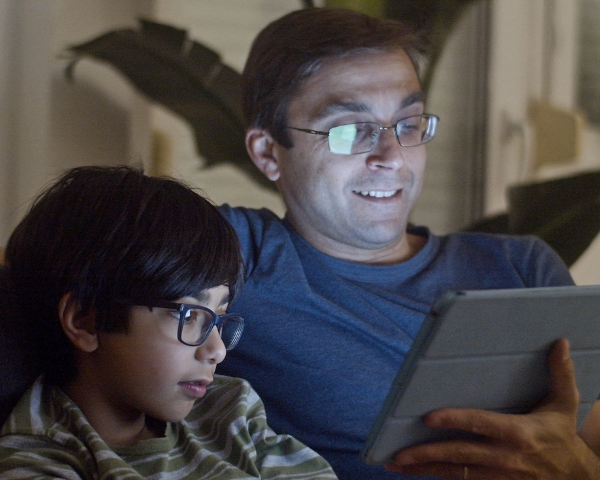
Can you inherit poor eyesight?
Our genes are the reason that we often resemble our parents. We can inherit physical traits like hair color, height, and facial features from them, as well as behavioral characteristics and medical conditions. Our eyesight is heavily influenced by our genes, so if your parents have vision problems, there is a good chance that they will pass them on to you too.
Is bad eyesight genetic? Yes, it can be. Most eye conditions and diseases are hereditary, but not every case of poor vision can be attributed to your family history. Is your bad vision genetic for sure? Not necessarily. Other environmental factors can also contribute. Genetics alone does not determine your eye health and quality of vision, although it does play a significant role.
Which eye conditions are hereditary?
According to the World Health Organisation (2022), at least 2.2 billion people worldwide suffer from some type of visual impairment. The most common vision problems are myopia, hyperopia, and astigmatism, which are all hereditary refractive errors. If one or both of your parents have one of these vision impairments, then you will likely inherit them as well.
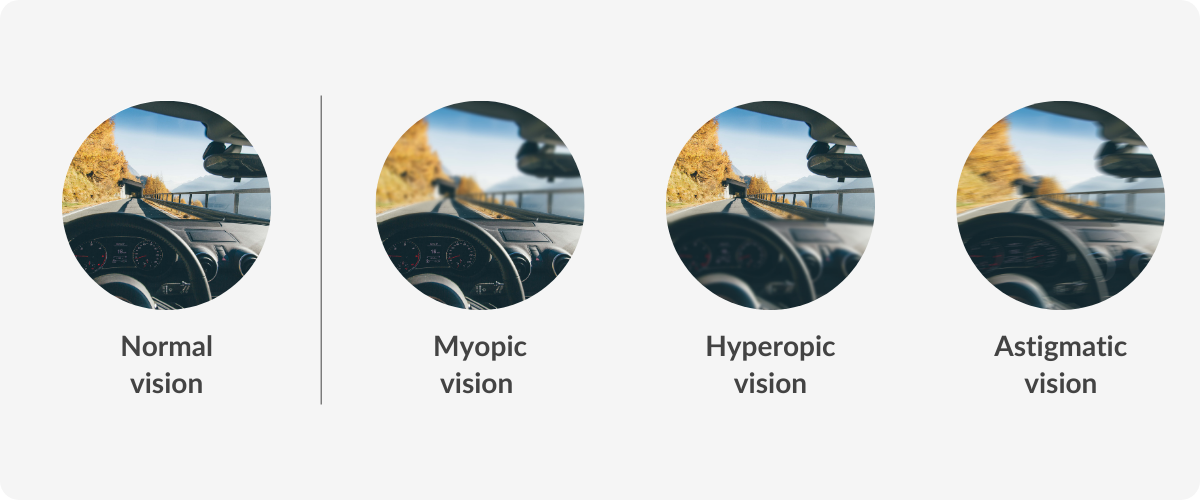
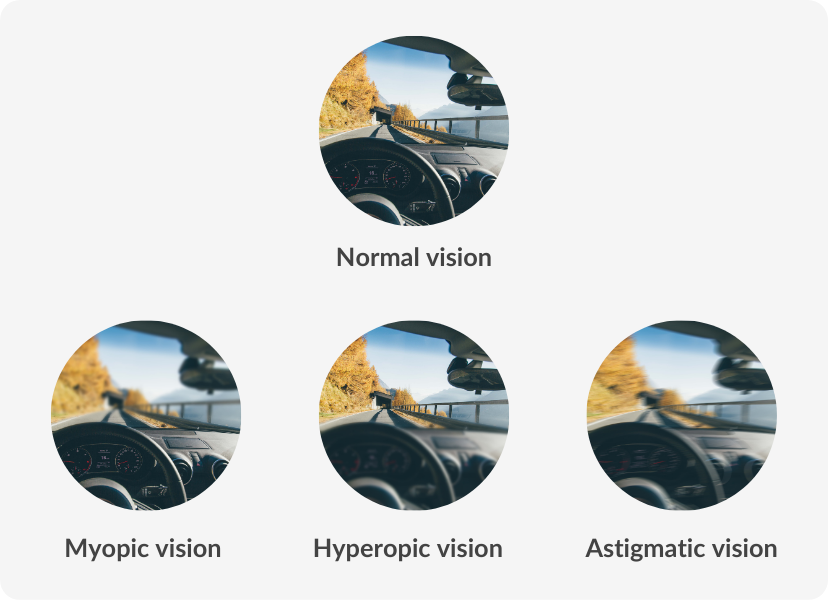
Myopia
Myopia is commonly referred to as nearsightedness or shortsightedness. Myopia occurs when the eyeball is too long, causing distant objects to appear blurry, while close objects can be seen clearly.
Hyperopia
Hyperopia is also called farsightedness or longsightedness. The opposite of myopia, it causes blurry vision at close range, but objects in the distance appear clear. A curved cornea, short eyeball, or a combination of the two is responsible for farsightedness.
Most of the time, this condition affects people over the age of 40, but it has started to occur more frequently in people in their 20s. This is attributed to the greater amount of time we now spend focusing our eyes on screens.
DID YOU KNOW
Nearsightedness is both the most common refractive error and the most common eye condition worldwide. The BBC (2022) reports that it affects around 40% of adults in the US, and at the current rate, half of the world population will be myopic by 2050.
Astigmatism
Astigmatism is another cause of bad vision. People with this hereditary condition experience blurred vision throughout their whole field of view as a result of the irregular shape of their cornea.
All of these refractive errors can be diagnosed by an eye test and easily treated with prescription glasses or contact lenses to restore normal vision. Regular eye tests are recommended every two years for adults and every year for under 16s and over 65s.
Cataracts
A cataract is a cloudy area on the lens of the eye that impairs eyesight. Cataracts cause 51% of all cases of blindness worldwide. Cataracts can develop due to a genetic predisposition, but there are many other unrelated causes. The natural aging process, trauma to the eye, exposure to UVB and other types of radiation, alcohol abuse, and smoking can all lead to cataracts.
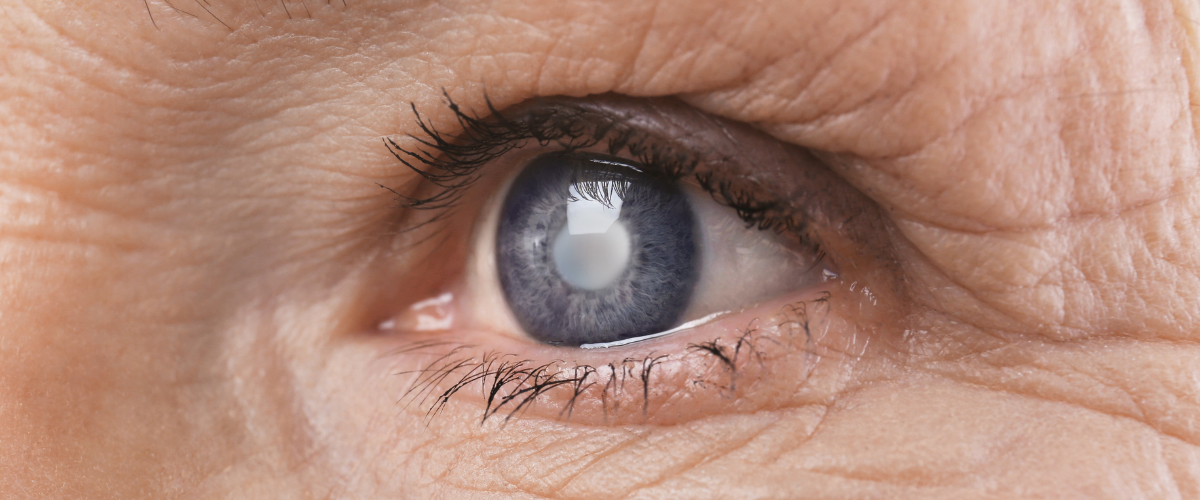
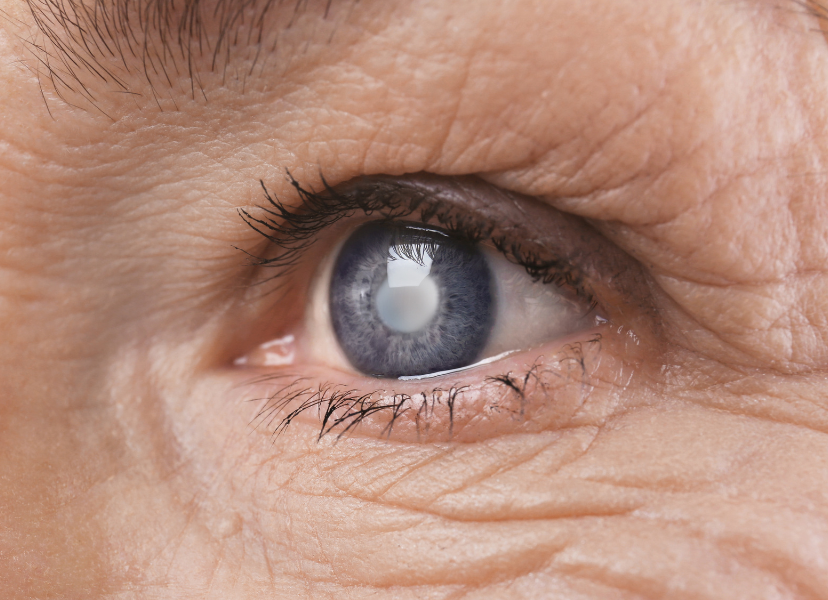
Genetic eye diseases
The following eye diseases are also linked to genetics. Again, that is not to say that the only way you can be afflicted with these diseases is to inherit them. Even with no record of these eye diseases in your family, certain environmental factors can lead to their development.
Age-related macular degeneration (AMD)
Age-related macular degeneration is an eye disease that blurs your central vision. The macula is found towards the back of the eye, and when damaged, it affects the ability to see faces clearly, read, and drive. If you have a family history of AMD, you have a higher chance of developing the disease.
As the name suggests, age-related macular degeneration occurs later in life, usually not before the age of 55. It can be classified as wet AMD or dry AMD. With dry (atrophic) AMD, the macula becomes thinner, while wet AMD sees the macula damaged by the growth of abnormal blood cells around it. As AMD progresses, those affected experience greater vision loss.
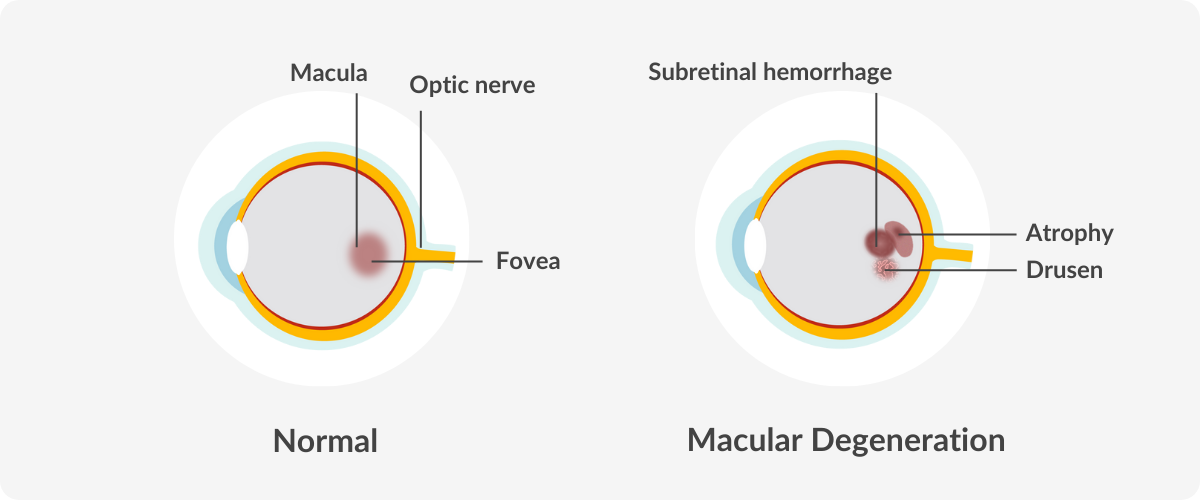
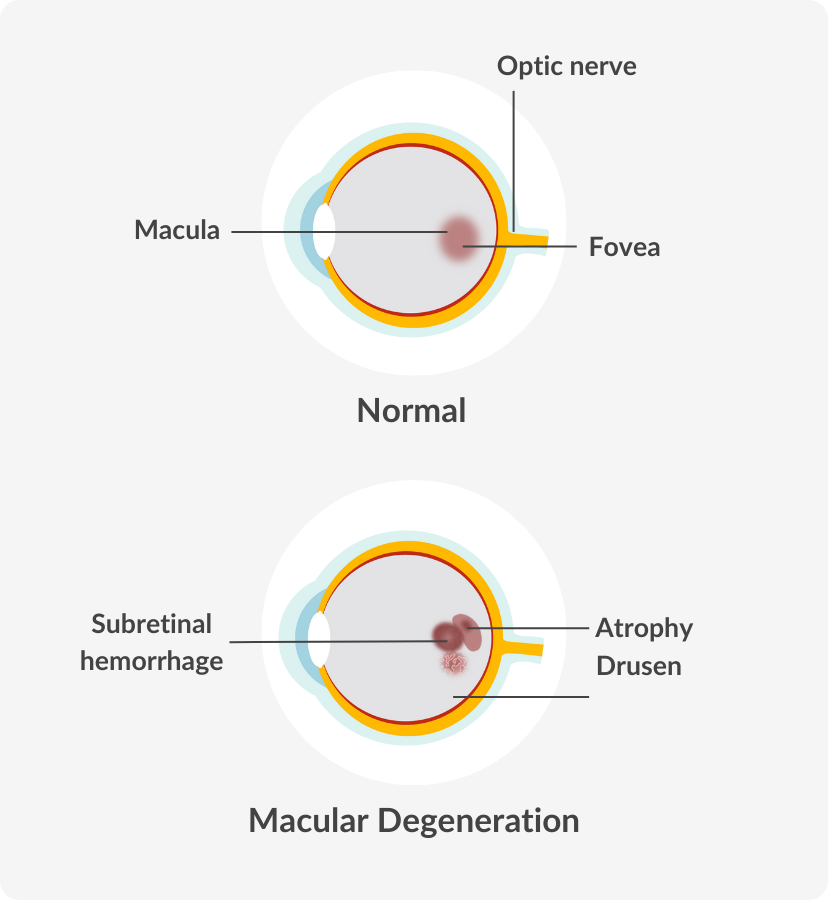
Glaucoma
Glaucoma is caused when the pressure inside the eye increases, damaging the optic nerve, resulting in poor eyesight and vision loss. It is the second-leading cause of blindness worldwide. There are usually no symptoms until the optic nerve has been considerably damaged, making glaucoma a particularly dangerous eye disease.
Although everyone is at risk of developing glaucoma, that risk factor is four to nine times higher if you have a family history of the disease.
Retinitis pigmentosa (RP)
Retinitis pigmentosa is a degenerative disease that affects the cells of the retina. The first symptoms manifest as tunnel vision and night blindness, with loss of central vision sometimes occurring later on.
The RP gene is inherited via an X chromosome. It is possible to be a carrier of the gene without suffering from the disease itself. If both your parents carry the inherited genetic markers, you have a 25% chance of being affected by RP.
Although everyone is at risk of developing glaucoma, that risk factor is four to nine times higher if you have a family history of the disease.
How to look after your eye health and vision
We can’t control what we inherit from our parents, but there are at least steps we can take to promote good eye health and reduce our chances of developing eyesight problems. A lot of the efforts we make for the good of our general health also benefit our eyes. Everyone, regardless of their family history, should follow these tips:
- Eat a balanced diet rich in nutrients like Vitamins A, C and E, zinc, lutein, zeaxanthin, and Omega-3 fatty acids. Good vitamin intake will go some way toward staving off cataracts and AMD. Omega-3 helps drain intraocular fluids, thus avoiding the high eye pressure that can cause glaucoma. Lutein and zeaxanthin are needed to maintain a healthy macula.
- Drinking plenty of water and staying hydrated helps your eyes – and all the other cells in your body – to function properly, and can prevent dry eye from occurring.
- Smoking is detrimental to almost every aspect of our health and increases the risk of developing many of the conditions and diseases mentioned in this article. Smoking can cause high blood pressure, which has been found to increase the risk of glaucoma.
- Always prioritize UV protection when buying sunglasses. UV rays have many harmful effects, and exposure to them can lead to the development of cataracts.
- Limit your screen time as much as possible. The increase in younger people developing long-sightedness is linked to their heavy use of technology and the extended periods of focusing on screens close to their eyes. To break up your screen time, use the 20-20-20 rule: Look 20 feet forward for 20 seconds every 20 minutes.
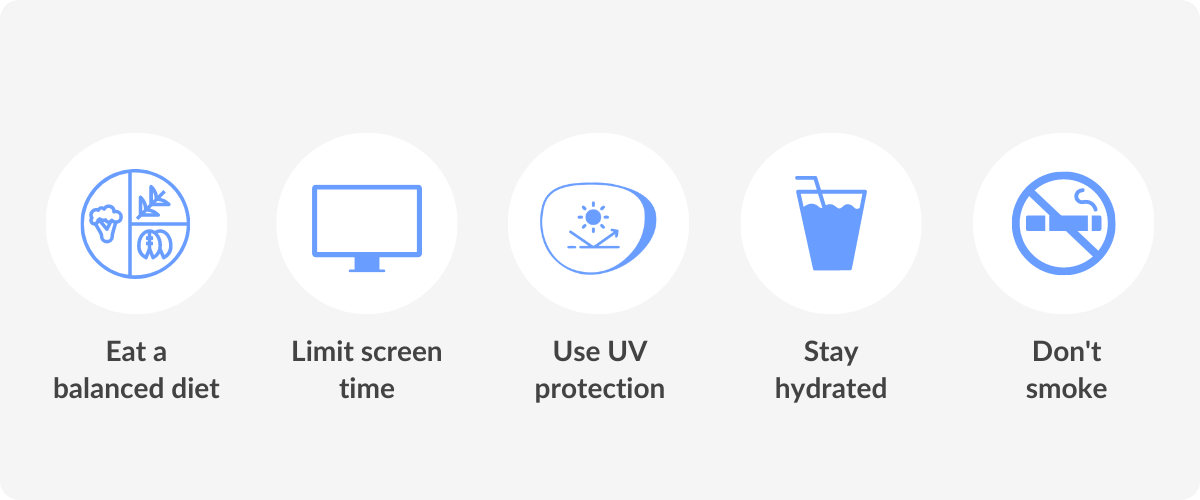
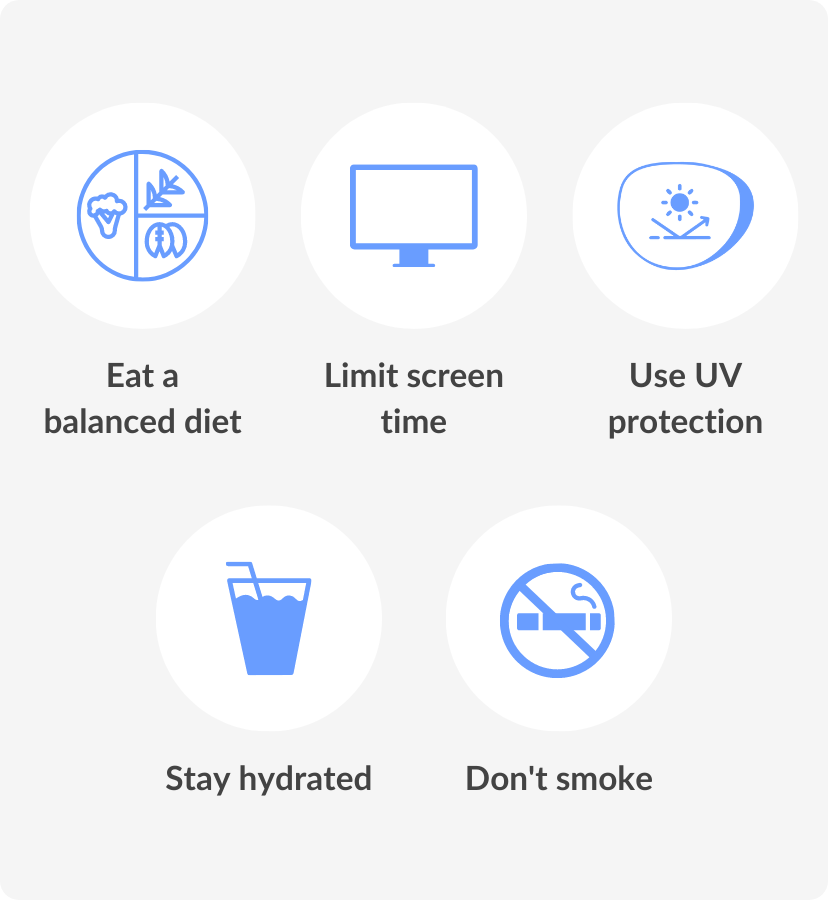
Even if you haven’t been blessed with perfect genes, don’t give up on your eyes! Not taking care of them properly can worsen existing hereditary eye conditions, create new ocular problems, or even lead to vision loss.
Regular eye tests will spot any vision problems you may have, while regular eye exams will be able to detect signs of diseases and other eye health issues. Appropriate treatment can then be prescribed by your optometrist or eye doctor.
If you have inherited a condition or disease, you’ll probably have to make some adjustments to your lifestyle or add some extra steps to your eye care routine. Although some hereditary conditions currently have no cure or effective treatment, vision rehabilitation can help make the most of what you have, and advancements in medical technology give hope for the future.
Reference list
Blindness and vision impairment (2022, October 13). World Health Organization. https://www.who.int/news-room/fact-sheets/detail/blindness-and-visual-impairment
Mudditt, Jessica (2022), Why short-sightedness is on the rise, bbc.com/future. https://www.bbc.com/future/article/20220927-can-you-prevent-short-sightedness-in-kids










































